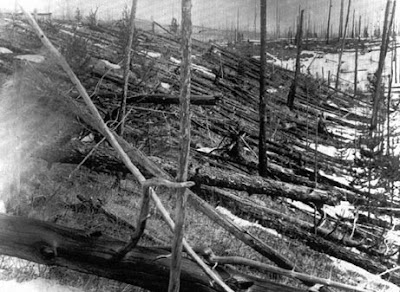 The TDI diesel-powered, oddly SUV-like Audi Cross Cabriolet concept car.
The TDI diesel-powered, oddly SUV-like Audi Cross Cabriolet concept car.BMW 128i and 135i
 BMW's baby performance coupe, the 1 Series. The 128i and 135i both go on sale this spring. They'll each run on some variation of a 3.0-liter inline six—the 128i will get 230hp; the 135i, 300 hp. With 128i prices starting under 30 grand, the 1 Series is meant to bring new drivers into the BMW fold.
BMW's baby performance coupe, the 1 Series. The 128i and 135i both go on sale this spring. They'll each run on some variation of a 3.0-liter inline six—the 128i will get 230hp; the 135i, 300 hp. With 128i prices starting under 30 grand, the 1 Series is meant to bring new drivers into the BMW fold.Chevy Beat
 This cartoonish concept, first revealed last spring at the New York Auto Show, is actually going to see production. Well, a vehicle based on the Beat will see production, as GM vice-chairman Bob Lutz announced Wednesday at the show. GM held an online vote to select one of three concept cars to put into production, and the Beat won. Good thing it did, Lutz said—that's the one they intended to build all along.
This cartoonish concept, first revealed last spring at the New York Auto Show, is actually going to see production. Well, a vehicle based on the Beat will see production, as GM vice-chairman Bob Lutz announced Wednesday at the show. GM held an online vote to select one of three concept cars to put into production, and the Beat won. Good thing it did, Lutz said—that's the one they intended to build all along.Chevy Equinox
 100 fuel-cell Equinoxes like this one will be tested by everyday drivers in New York, D.C. and L.A. as part of Chevy's Project Driveway market-research initiative.
100 fuel-cell Equinoxes like this one will be tested by everyday drivers in New York, D.C. and L.A. as part of Chevy's Project Driveway market-research initiative.Ferrari F430 Scuderia
 This lighter, 510hp variation on the F430 made its North American debut at the L.A. show.
This lighter, 510hp variation on the F430 made its North American debut at the L.A. show.Honda FCX Clarity
 Wednesday morning at the Los Angeles Auto Show, Honda unveiled the FCX Clarity fuel-cell vehicle. It's an entirely hydrogen-powered, zero-emissions vehicle set to hit streets—or rather, the streets of L.A., where Honda will begin to roll out the FCX in limited numbers—this summer.
Wednesday morning at the Los Angeles Auto Show, Honda unveiled the FCX Clarity fuel-cell vehicle. It's an entirely hydrogen-powered, zero-emissions vehicle set to hit streets—or rather, the streets of L.A., where Honda will begin to roll out the FCX in limited numbers—this summer.Jaguar XF
 This, the 2009 Jaguar XF, is the car that's supposed to save the beleaguered Jaguar brand.
This, the 2009 Jaguar XF, is the car that's supposed to save the beleaguered Jaguar brand.Lexus IS-F
 Lexus gets into the sport-sedan game with this beast, which is powered by a 5-liter V8 and has a top speed of 170 mph.
Lexus gets into the sport-sedan game with this beast, which is powered by a 5-liter V8 and has a top speed of 170 mph.Mini Clubman
 This expanded variation on the Mini raised possibly the only philosophical question of the auto show: If a Mini gets bigger, is it still a Mini?
This expanded variation on the Mini raised possibly the only philosophical question of the auto show: If a Mini gets bigger, is it still a Mini?Nissan GT-R
 The mythical, Porsche-killing, $70,000 2009 Nissan GT-R arrives in America at last. Its 3.8-liter twin-turbocharged V6 kicks out 480 hp and slingshots the GT-R from 0 to 60 in less than four seconds.
The mythical, Porsche-killing, $70,000 2009 Nissan GT-R arrives in America at last. Its 3.8-liter twin-turbocharged V6 kicks out 480 hp and slingshots the GT-R from 0 to 60 in less than four seconds. Rear shot of the GT-R.
Rear shot of the GT-R.Porsche 911 GT2
 This 530hp upgrade on Porsche's flagship ride is the meanest 911 yet.
This 530hp upgrade on Porsche's flagship ride is the meanest 911 yet.Lamborghini
 The Reventòn's downright belligerent appearance was modeled on the F-22 Raptor fighter jet.
The Reventòn's downright belligerent appearance was modeled on the F-22 Raptor fighter jet.Smart Cabriolet
 The Europeans are coming! In January, in fact. Here's the Smart ForTwo Passion Cabriolet. It's roomier than it looks, really.
The Europeans are coming! In January, in fact. Here's the Smart ForTwo Passion Cabriolet. It's roomier than it looks, really.Chevy Tahoe Hybrid
 Thanks to its two-mode hybrid technology, this 6.0-liter, full-size SUV was named Green Car of the Year yesterday at the auto show. Is this a sign of the apocalypse? Perhaps.
Thanks to its two-mode hybrid technology, this 6.0-liter, full-size SUV was named Green Car of the Year yesterday at the auto show. Is this a sign of the apocalypse? Perhaps.Volvo Recharge
 To my mind, this could be the car of the future. A "hot hatch" based on the C30 platform, the Volvo Recharge Concept is a plug-in hybrid powered by wheel motors and equipped with a small flex-fuel engine that can use any number of fuels—ethanol, biodiesel, whatever—to charge the battery. Too bad it's still very much a concept.
To my mind, this could be the car of the future. A "hot hatch" based on the C30 platform, the Volvo Recharge Concept is a plug-in hybrid powered by wheel motors and equipped with a small flex-fuel engine that can use any number of fuels—ethanol, biodiesel, whatever—to charge the battery. Too bad it's still very much a concept.






